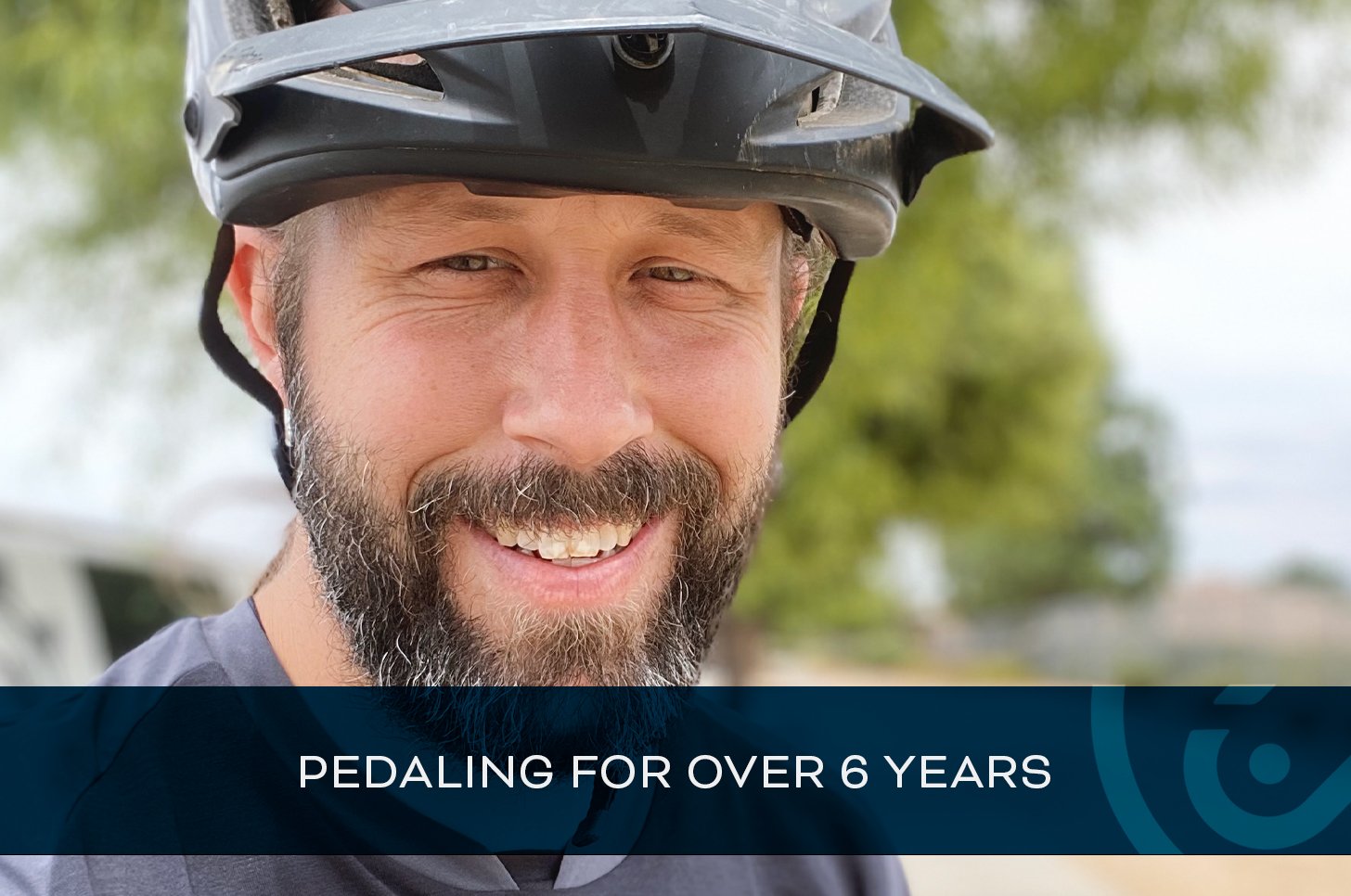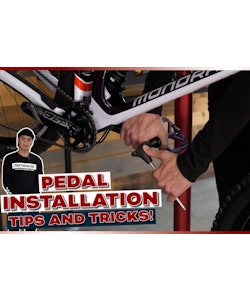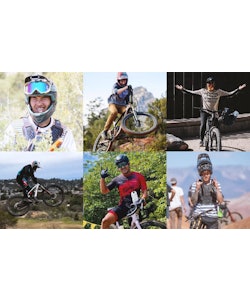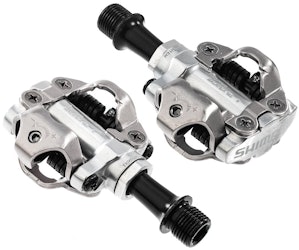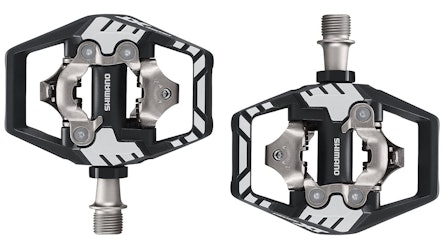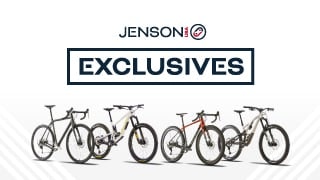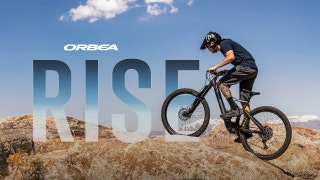Whether chasing Tour de France glory, barreling down a World Cup downhill course or just spinning to the local coffee shop, bike pedals are the conduit that helps transform your pedaling power into forward momentum on the road or trail. And while many riders might think a pedal is just a pedal, there are actually many different varieties and performance characteristics to consider when choosing bicycle pedals. Here’s a breakdown of the most common types of bike pedals and what to look for.
Platform pedals: Also known as flat pedals, these are the simplest version because there is no clip-in mechanism. Instead, there’s a large platform where you simply place your shoe and push down. You’ll find basic plastic-body platform pedals on most lower-end bicycles. These are the norm for many city and cruiser bikes, allowing you to ride in just about any type of footwear.
Downhill and enduro mountain bikers also often go for platform pedals, preferring to be able to rapidly remove their foot from the pedal without having to disengage a cleat. But unlike less expensive platform pedals you find on city bikes, these gravity-oriented flat pedals are usually made of durable plastic or metal. They also have small, sometimes adjustable pins that help the sole of the rider’s shoe maintain grip and not slide around.
Road Pedals: Almost exclusively used while road riding, this pedal system provides efficient power transfer because the pedal is attached to the sole of your shoe via a shoe-mounted cleat. This means the bike pedal clips to the bottom of the shoe. This means energy is transferred both on the downstroke and upstroke of the pedaling motion. The word “clipless” is a reference to back when toe clips and straps were used to secure the rider’s foot to the pedal. However, in the mid-1980s as riders moved away from this style in favor of modern road pedals, they no longer needed the toe clips, thus clipless.
Most road pedals, except for some brands like Speedplay, are single sided. The main considerations are weight, level of engagement, and amount of float, which is a reference to how much side-to-side play a pedal allows. Most road pedals have adjustable engagement tension with an Allen key screw on the pedal body. Some road pedals offer different cleats that provide more or less float. Finally, the majority of road pedals come with cleats that attach to the sole of your cycling shoes with three screws. These cleats are generally pedal specific. So, for example, you can’t use Shimano cleats with Look pedals.
Mountain Bike Pedals: Also known as mountain bike clipless pedals. This style also relies on a clip-in mechanism where a shoe-mounted cleat clips into the pedal. This allows for efficient energy transfer. This style can be found on all types of mountain bikes. These pedals feature a double-sided mechanism making it easier to get clipped into your pedals during technical or high-speed riding situations.
Mountain bike pedals usually have an adjustable tension bolt system. They are most often differentiated by weight and platform size. More cross-country oriented options, such as the lighter weight Crankbrothers Eggbeater, have a very minimalist platform. The beefier gravity-focused Shimano Saint has a much larger platform. Like road pedals, mountain bike pedals typically come with specific cleats that mount to the bottom of mountain biking shoes. However, there is more cleat cross compatibility with mountain bike pedals. This is due to the wide adoption of Shimano’s SPD cleat. That means, for example, that Shimano SPD cleats will work with many other mountain bike pedals among others. While you might be asking yourself what are SPD pedals, just know that all mountain bike clip-in shoes are SPD Shoes.
Whether you’re looking maximize your pedal stroke with shoes and pedals, or just looking to cruise the boardwalk with something simple, we have the pedals you need. While mountain pedals can be used on road bikes, it’s not recommended to use road systems on mountain bikes. This is due to mountain bike shoes being designed to walk offroad while road shoes are not designed to be walked in much. If you have any questions about bike pedals, don’t hesitate to call a JensonUSA Gear Advisors a call at 888-880-3811. They who can help assure you get the right ones for you and your bike.
